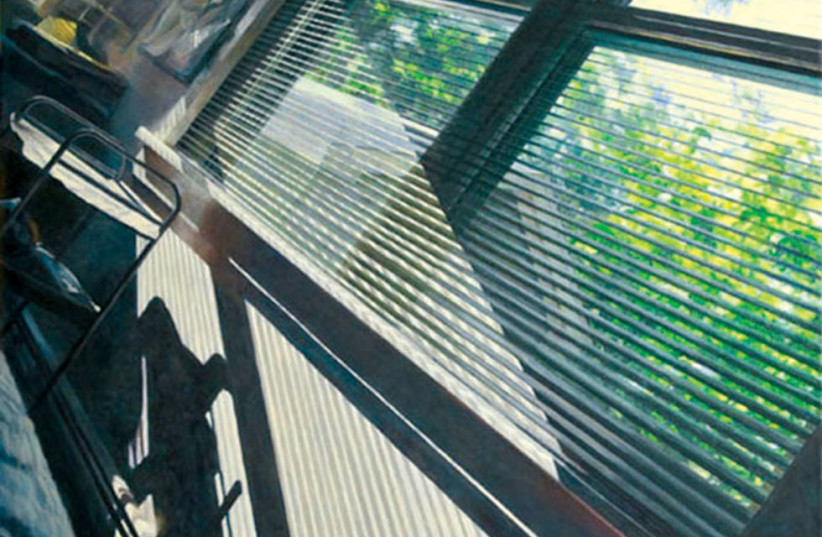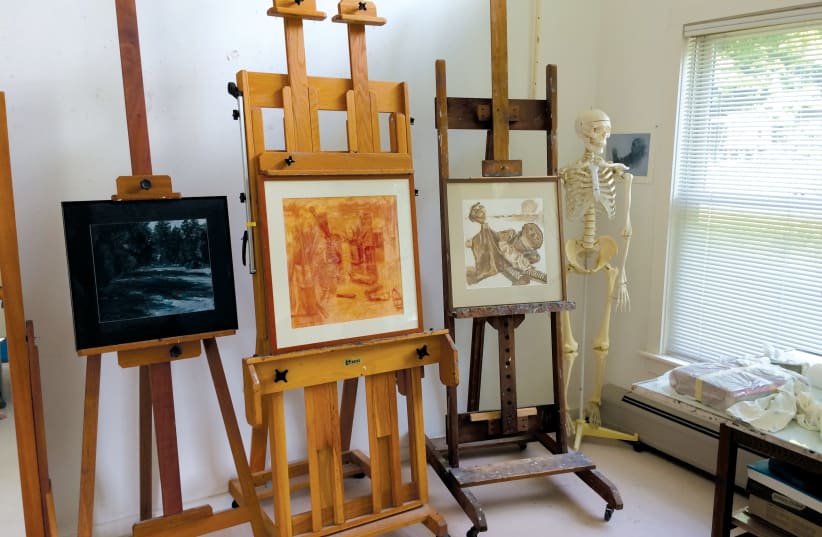My mother, Sarah Belchetz-Swenson, was a master artist. Painter, printmaker, and portraitist, she constellated a rare combination of modern vision and Renaissance training. Like the Old Masters whom she studied, my mother watched nature, experimented with form and color, and had the stamina to learn how to bring ink, oils, and watercolor to the service of her vision.
I remember my mother experimenting with pigments, cooking linseed in the backyard until it became the same burnt oil that Rembrandt used; or, suddenly, in the middle of dinner, reaching over to feel my arm to see how its sinews connected to my shoulder. She kept a skeleton in her studio to learn anatomy (a source of much excitement for my grade-school friends) and would slow the car to point out the sun reflecting off the side of a red tobacco barn. When painting landscapes, she returned to the same place, at the same time, every day, for weeks, to catch the light and make sure she painted it authentically.
Along with faithfully representing what her keen eye saw and her masterful hand drew, my mother went one step further. She added a narrative.
The start of an artist's career
My mother knew she wanted to be an artist from the time she was a child.
At age six she painted her first self-portrait. It is set in her bedroom and she is looking out the window, a small rag doll in her hand. Her left foot is raised as if in motion, and an open book, a teddy bear, and alphabet blocks (with her initials, S.J.B.) decorate the floor. The dark color of the room contrasts with the illuminated window, the lightest part of the whole composition. At a time when most six-year-olds are playing with the toys depicted in the portrait, my child-mother paused to dream. “I want to become an artist” she seemed to be saying, and by painting this piece, she committed herself to her future.

By the age of 13, my mother was actively working on her dream. She attended weekly sessions at the Art Students League of New York, worked in the Metropolitan Museum of Art, and graduated as a studio art major from Oberlin College.
She married my father, had my sister and me, and the family moved to 30 acres in Northern Vermont. Here, off a dirt road in a house that she designed and my father built, my mom began to create some of her most seminal works.
In 1971, she embarked upon an ambitious project she named “Revisions,” in memory of the Jews killed by the Nazis.
The folio contains 14 prints. In the first, my sister, Zoe, lies asleep in rumpled sheets, nestled into the sparse floor plan of the Lutomiersk synagogue in Poland. In a second print, I run across the field, while Zoe hides behind a tree. Between us is the blueprint for a synagogue in Wołpa. With its stunning vaulted ceiling, the Wołpa synagogue was declared a Polish Monument of Culture in 1929. That distinction meant nothing to the Germans who burned it to the ground in November 1942. Almost 30 years later, with no form beyond bare bones, it comes to life again under my mom’s sure draftsmanship. Juxtaposed onto a Vermont landscape, the synagogue’s skeleton holds the irrepressible energy of a new generation of Jewish children.
My mother was born in 1938, one year before Hitler invaded Poland. In creating this memorial piece, she used her own family to re-envision a world in which grief at the loss of life and hope for its continuation can coexist. “I could easily as not have been among the victims,” she concludes. “At the same time, I recognized that I have been spared.”
A simple print of my mom’s industrial sink is one of my favorites. Built into its heavy frame are a flower-headed tap and a faucet on which two bottle brushes hang, all done in shades of grey. Water pools at the bottom of the basin, not worthy of much attention…but lo! What is that? A tiny foot is sinking near the drain! And in fact, if you are familiar with the 16th-century Dutch landscape painter, Pieter Bruegel the Elder, you will recognize this foot! It belongs to Icarus, the character from Greek mythology, who ignoring his father’s warnings, flew too close to the sun on wings of wax, only to plummet into the sea and die.
Bruegel names his work, “Landscape with the Fall of Icarus.” In the forefront of his painting, a farmer plows his field. Icarus’s foot is tiny and hard to spot. If, as John Sunderland tells us, “Bruegel’s painting is a parable on human aspiration,” what does my mother’s “Fall of Icarus,” come to teach us? Perhaps that even for the painter there is no escape from death. This warning is revealed within the most ordinary framework. For Bruegel, it’s a landscape; for my mother, a sink becomes the visual parable for those who look.
Influenced by Rembrandt, Caravaggio, Bruegel, and others, my mother was a new Old Master. And, like these prominent pre-modern artists of the European Renaissance, she painted official portraits alongside her own work. Her subjects, whom she spent months getting to know, included Jill Kerr Conway, the first woman president of Smith College; the poet laureate Richard Wilbur; Rose Oliver, the first woman to hold a tenure-track position at Amherst College; the transplant surgeon Keith Reemtsma; and the legendary civil rights attorney, Jack Greenberg.
For the Huntington Library in San Marino California, my mother created a portrait of the 17th-century English playwright, Aphra Behn. Traveling to England, she studied a variety of engravings, read Aphra Behn’s plays, and visited her grave. Back home, she hired a buxom model to dress in 17th-century clothes. Combining her research with her imagination she produced the first portrait of a woman writer that the library collection had ever had. Rembrandt, and his wife Saskia (for whom I was named), would be proud!
Sadly, my mom passed away in the fall of 2021. This September, Amherst College will be showing a retrospective of her work. If you visit the show, between September 18th and October 16th, you will recognize the works described in this article and see many others, each meticulously painted, drawn, or printed, yet dancing with import.
In the very last painting of a series she titled “Rites,” we see the artist again. At her feet is her trusty dog and leaning against her leg is the black form of a painting. She is no longer looking out a window, as she did when she was six. Secure in her talent, she is looking directly at the viewers – inviting them into her world. ■
